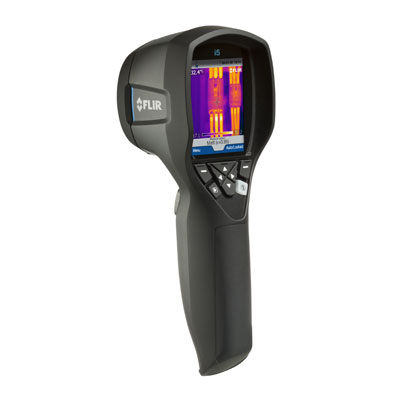FLIR i5: My Newest Review
 This is a post about the benefits of owning a thermal camera if you are a homeowner or contractor doing some light energy efficiency work. The following is what I observed when using a Flir i5 here at the office.
This is a post about the benefits of owning a thermal camera if you are a homeowner or contractor doing some light energy efficiency work. The following is what I observed when using a Flir i5 here at the office.
 This is a post about the benefits of owning a thermal camera if you are a homeowner or contractor doing some light energy efficiency work. The following is what I observed when using a Flir i5 here at the office.
This is a post about the benefits of owning a thermal camera if you are a homeowner or contractor doing some light energy efficiency work. The following is what I observed when using a Flir i5 here at the office.
 Whether you’re a plant/building MRO professional, electrical or HVACR contractor, or a building inspector, FLIR’s i-Series infrared (IR) cameras allow you to see what you’ve been missing. Rugged, lightweight, and affordable, FLIR i3, i5, and i7 IR cameras feature a large 2.8-inch color LCD that lets you view detailed temperature variations on critical systems, components, and connection panels.
Whether you’re a plant/building MRO professional, electrical or HVACR contractor, or a building inspector, FLIR’s i-Series infrared (IR) cameras allow you to see what you’ve been missing. Rugged, lightweight, and affordable, FLIR i3, i5, and i7 IR cameras feature a large 2.8-inch color LCD that lets you view detailed temperature variations on critical systems, components, and connection panels.
 Previously on Brady’s blog… we discussed FLIR’s new “How to Choose” video series and looked at the i-series as it pertains to mechanical and electrical applications. This post is also on the i-series but takes a look at its features with an eye towards building and home inspection applications.
Previously on Brady’s blog… we discussed FLIR’s new “How to Choose” video series and looked at the i-series as it pertains to mechanical and electrical applications. This post is also on the i-series but takes a look at its features with an eye towards building and home inspection applications.
Today’s post is a buyer’s guide to the FLIR i-series cameras (the first in a series of six by me) and also a summary of the key points outlined in FLIR’s new “How to Choose” series of videos.